Manchester United has unveiled plans for a new 100,000-seat stadium designed by British architectural firm Foster + Partners. The proposed stadium, adjacent to the current Old Trafford, will be the largest football stadium in the UK and serve as the focal point of a broader redevelopment project aimed at reshaping the surrounding district. The initiative is expected to enhance the fan experience while generating economic and social benefits for Manchester.
A Vision for the Future of Old Trafford
The redevelopment of Old Trafford is part of a larger plan to modernize Manchester United’s facilities while maintaining ties to its historic roots. The new stadium will replace the existing 74,197-seat Old Trafford, which has been the club’s home for 115 years. The decision to build next to the current stadium ensures that Manchester United’s heritage remains intact while ushering in a new era for the club.
Manchester United co-owner Sir Jim Ratcliffe emphasized the significance of the project, stating, “This new stadium will set a new standard for football venues, providing an unmatched experience for fans.” He further highlighted the importance of preserving the club’s identity, adding, “By building next to the existing site, we will preserve the essence of Old Trafford while creating a world-class facility.”
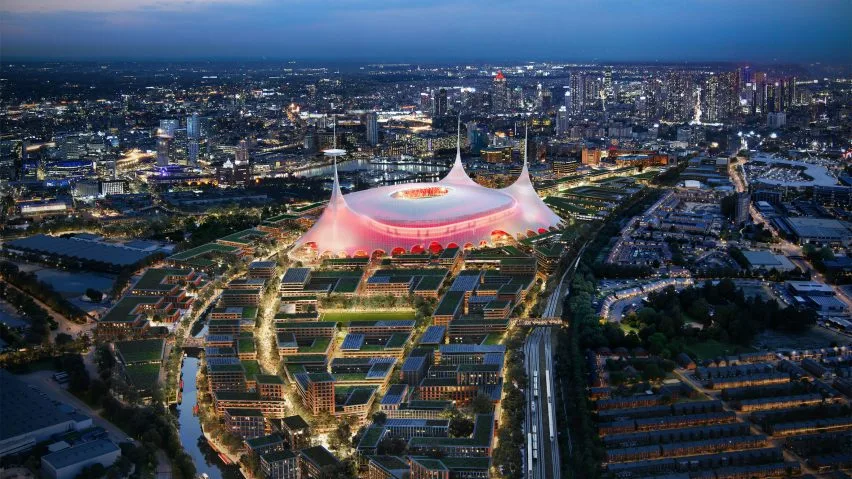
Key Objectives of the Project
- Increase Stadium Capacity: The new stadium will accommodate 100,000 spectators, making it the largest in the UK and among the top football venues in the world.
- Enhance Fan Experience: The design prioritizes better sightlines, improved acoustics, and modern amenities to provide an immersive matchday experience.
- Sustainability and Innovation: The stadium will incorporate renewable energy systems, water collection mechanisms, and environmentally friendly construction materials.
- Economic Growth and Job Creation: The project is expected to contribute £7.3 billion annually to the UK economy and generate 92,000 jobs.
Innovative Design and Sustainability Features
Foster + Partners has integrated cutting-edge architectural and engineering solutions to make the stadium a model of efficiency and sustainability. The design features a massive energy-harvesting canopy that will cover both the stadium and the public plaza. This canopy will be equipped with solar panels and rainwater collection systems to enhance environmental efficiency.
Nigel Dancey, Head of Studio at Foster + Partners, described the design, stating, “Three towering masts will hold up the stadium’s canopy, symbolizing the club’s iconic trident emblem and making a distinctive mark on the Manchester skyline.”
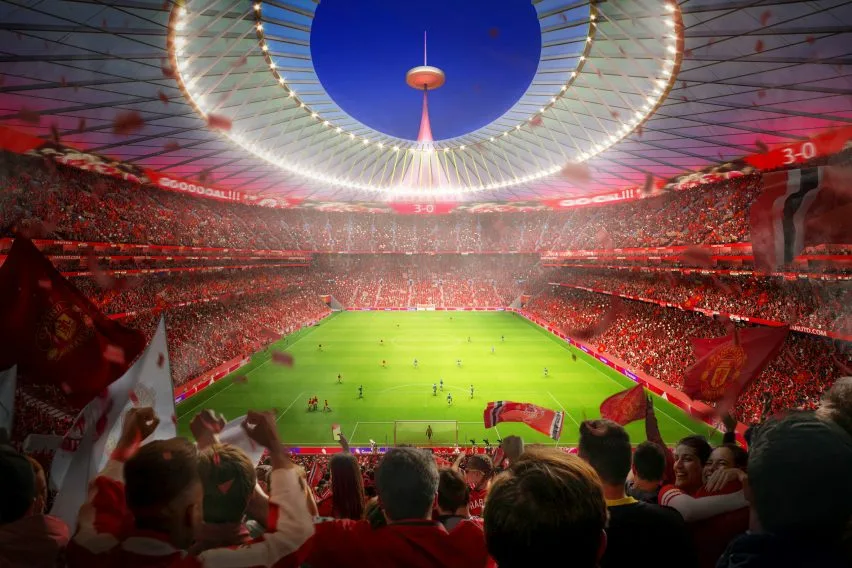
Key Design Elements
- An Outward-Looking Structure: The stadium will be designed with an expansive, open feel, ensuring that it becomes a central hub for sports and cultural activities.
- A Vast Public Plaza: The surrounding area will include a plaza twice the size of Trafalgar Square, offering pedestrian-friendly spaces, retail areas, and green zones.
- Integration with Public Transport: The district will be designed to be entirely walkable and well-connected through existing and new transportation networks.
- Prefabricated Construction Elements: Components of the stadium will be preassembled and transported via the Manchester Ship Canal, reducing construction time and minimizing environmental disruption.
Dancey further elaborated on the community-focused approach, stating, “This will be a space not just for match days, but for the community to enjoy year-round.” Additionally, he emphasized the efficiency of construction methods, saying, “We will leverage the Manchester Ship Canal to transport prefabricated elements, enabling us to complete the stadium within record time.”
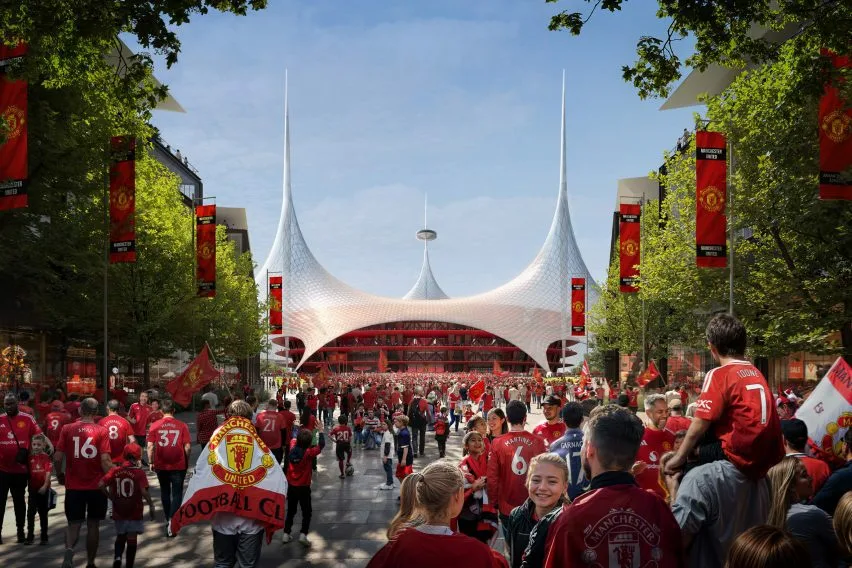
The Regeneration of Old Trafford
The stadium project is part of a larger Old Trafford Regeneration Master Plan, which aims to transform the area into a world-class sports and cultural hub. The initiative includes mixed-use developments such as commercial spaces, hotels, residential complexes, and recreational zones.
The redevelopment is being spearheaded by:
- Manchester United: Leading the construction and execution of the stadium project.
- The Old Trafford Regeneration Task Force: Chaired by Lord Sebastian Coe, responsible for overseeing the district-wide redevelopment.
- The Mayoral Development Corporation: Managing infrastructure and urban planning for the area.
Omar Berrada, Chief Executive of Manchester United, highlighted the broader vision, stating, “This project is more than just a stadium; it is a catalyst for long-term economic growth in the region.”
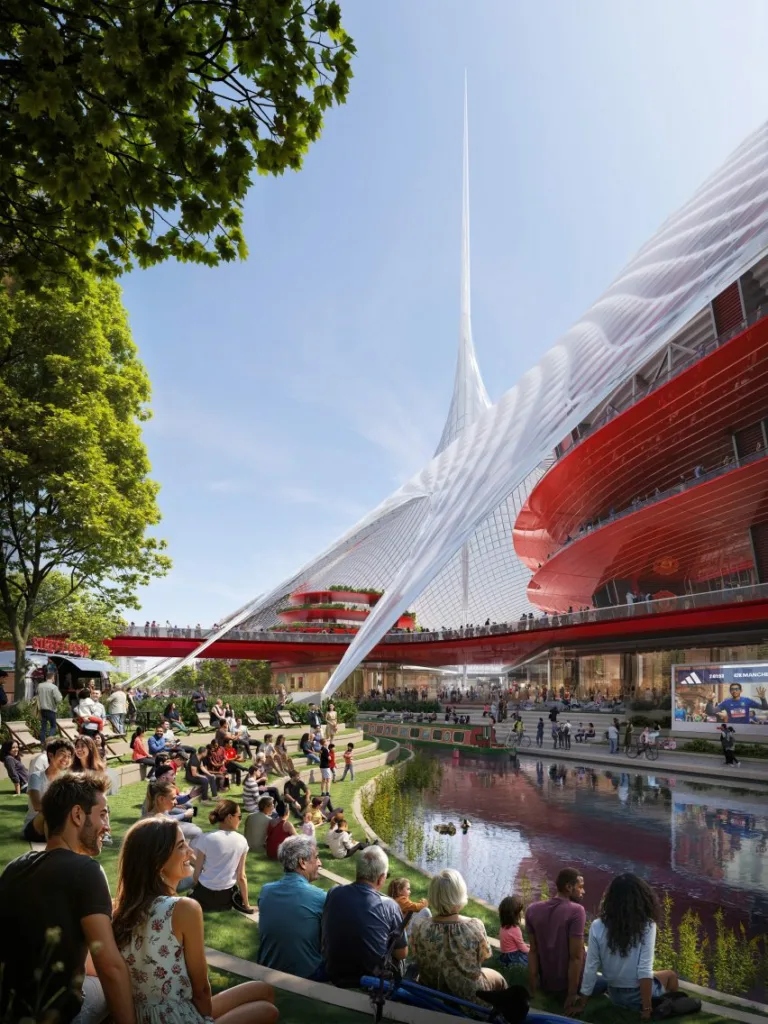
Economic and Social Impact
Beyond football, the project is expected to drive long-term economic benefits for the region:
- 92,000 New Jobs: The stadium and surrounding infrastructure will create employment opportunities in construction, hospitality, retail, and administration.
- £7.3 Billion Annual Economic Impact: Increased tourism, business investments, and commercial activity will contribute significantly to the local economy.
- Boost in Housing and Infrastructure: The redevelopment will include 17,000 new residential units, commercial office spaces, and transport improvements.
Construction Timeline and Next Steps
The stadium is expected to be completed within five years. Manchester United will be engaging with fans, local residents, and stakeholders throughout the design and planning stages to ensure the project meets community expectations. Manchester United co-owner Sir Jim Ratcliffe emphasized that the stadium will mark the beginning of a new chapter for the club, stating, “Our current stadium has served us well for over a century, but it has fallen behind the world’s best.” He reiterated the importance of continuity, adding, “By building next to the existing site, we will preserve the essence of Old Trafford while creating a world-class facility.”
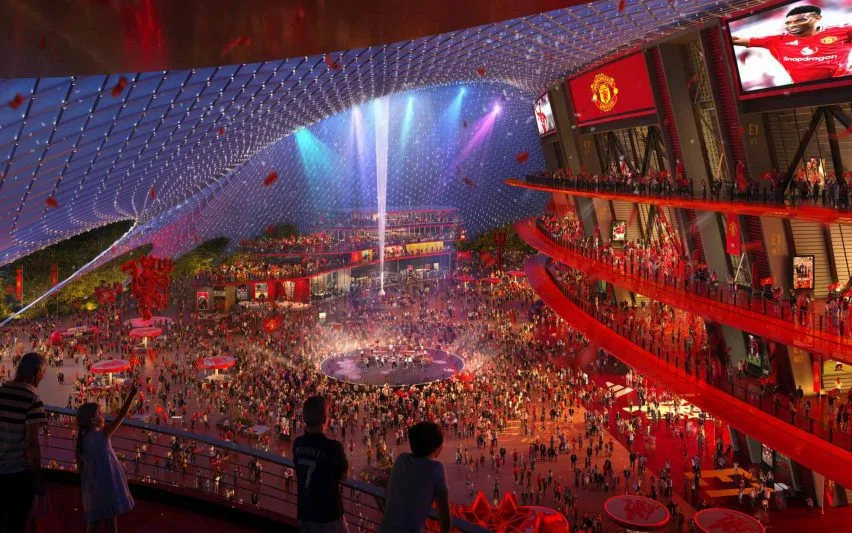
Conclusion
With its combination of sustainability, modern technology, and economic impact, the Manchester United stadium project is set to be one of the most significant developments in global sports infrastructure. As the club moves forward with the design and construction phases, football fans and the city of Manchester eagerly anticipate the arrival of a new world-class venue that will shape the future of the sport for decades to come.
Images- deezen.com, designboom.com

